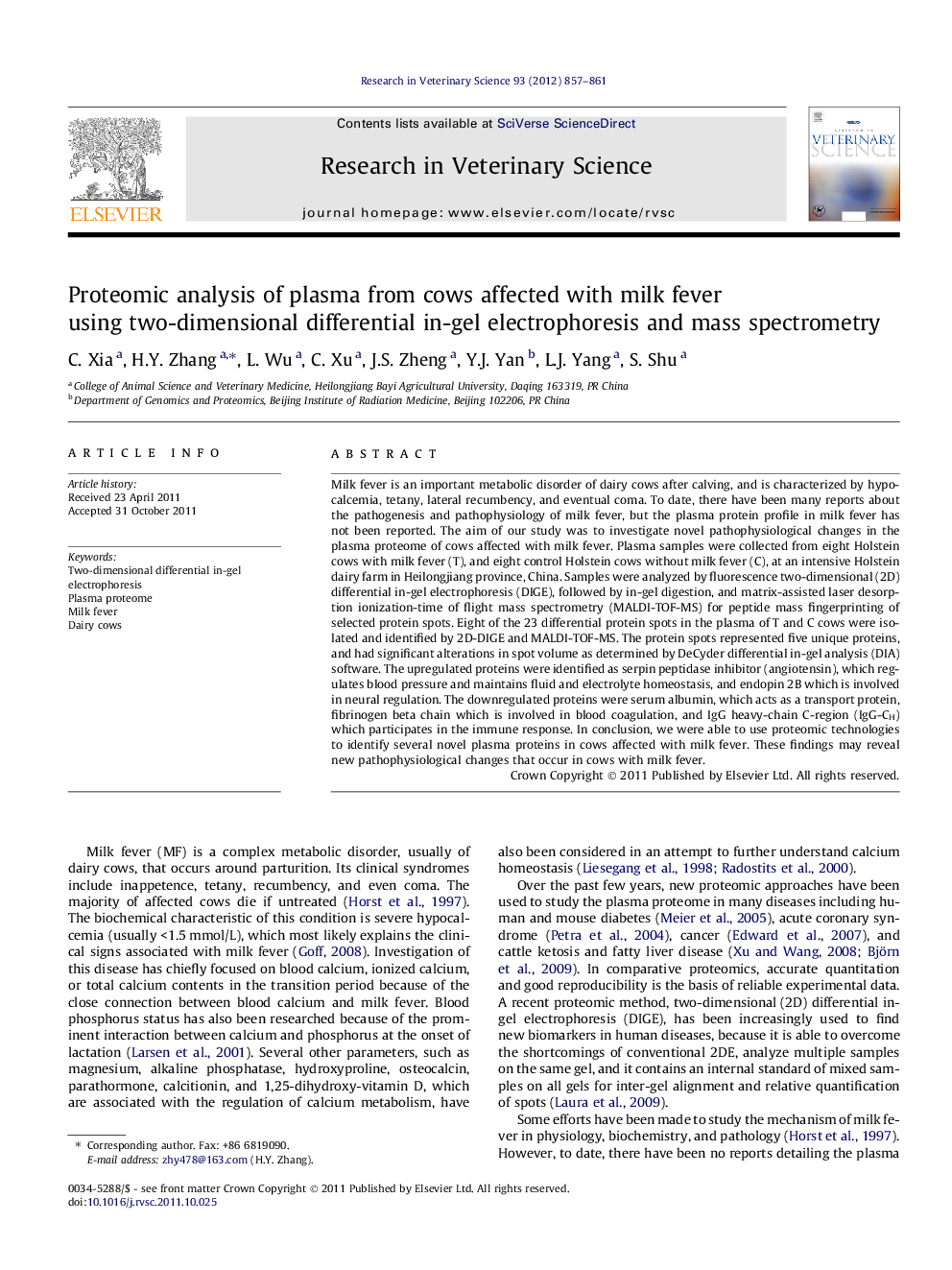| کد مقاله | کد نشریه | سال انتشار | مقاله انگلیسی | نسخه تمام متن |
|---|---|---|---|---|
| 5795106 | 1110505 | 2012 | 5 صفحه PDF | دانلود رایگان |

Milk fever is an important metabolic disorder of dairy cows after calving, and is characterized by hypocalcemia, tetany, lateral recumbency, and eventual coma. To date, there have been many reports about the pathogenesis and pathophysiology of milk fever, but the plasma protein profile in milk fever has not been reported. The aim of our study was to investigate novel pathophysiological changes in the plasma proteome of cows affected with milk fever. Plasma samples were collected from eight Holstein cows with milk fever (T), and eight control Holstein cows without milk fever (C), at an intensive Holstein dairy farm in Heilongjiang province, China. Samples were analyzed by fluorescence two-dimensional (2D) differential in-gel electrophoresis (DIGE), followed by in-gel digestion, and matrix-assisted laser desorption ionization-time of flight mass spectrometry (MALDI-TOF-MS) for peptide mass fingerprinting of selected protein spots. Eight of the 23 differential protein spots in the plasma of T and C cows were isolated and identified by 2D-DIGE and MALDI-TOF-MS. The protein spots represented five unique proteins, and had significant alterations in spot volume as determined by DeCyder differential in-gel analysis (DIA) software. The upregulated proteins were identified as serpin peptidase inhibitor (angiotensin), which regulates blood pressure and maintains fluid and electrolyte homeostasis, and endopin 2B which is involved in neural regulation. The downregulated proteins were serum albumin, which acts as a transport protein, fibrinogen beta chain which is involved in blood coagulation, and IgG heavy-chain C-region (IgG-CH) which participates in the immune response. In conclusion, we were able to use proteomic technologies to identify several novel plasma proteins in cows affected with milk fever. These findings may reveal new pathophysiological changes that occur in cows with milk fever.
Journal: Research in Veterinary Science - Volume 93, Issue 2, October 2012, Pages 857-861